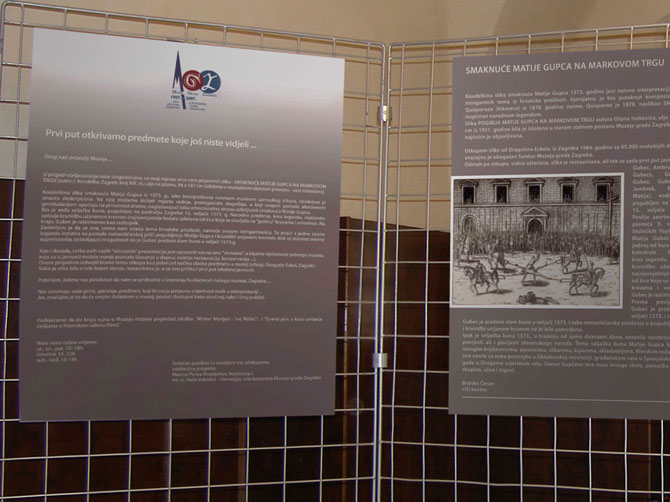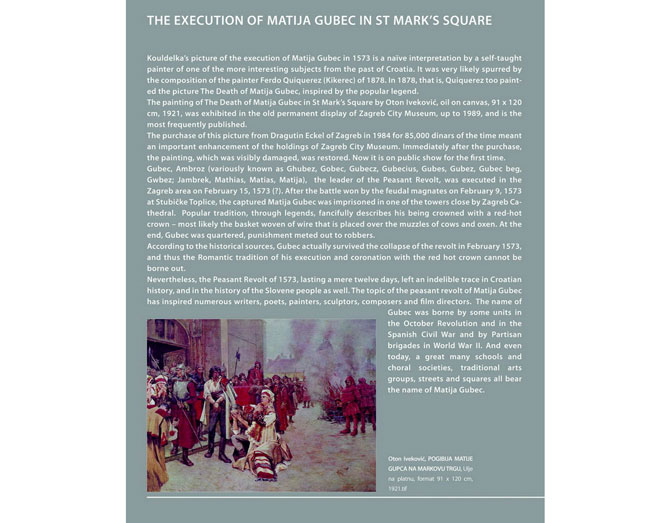An exhibition within the “Object of the Month” campaign on the occasion of the centennial of Zagreb City Museum
Exhibition concept: Branko Ćeran

I. Koudelka, The execution of Matija Gubec in St Mark Square, MGZ 4724
Kouldelka's picture of the execution of Matija Gubec in 1573 is a naive interpretation by a self-taught painter of one of the more interesting subjects from the past of Croatia. It was very likely spurred by the composition of the painter Ferdo Quiquerez (Kikerec) of 1878. In 1878, that is, Quiquerez too painted the picture The Death of Matija Gubec, inspired by the popular legend.
The painting of The Death of Matija Gubec in St Mark's Square by Oton Iveković, oil on canvas, 91 x 120 cm, 1921, was exhibited in the old permanent display of Zagreb City Museum, up to 1989, and is the most frequently published.
The purchase of this picture from Dragutin Eckel of Zagreb in 1984 for 85,000 dinars of the time meant an important enhancement of the holdings of Zagreb City Museum. Immediately after the purchase, the painting, which was visibly damaged, was restored. Now it is on public show for the first time.
Gubec, Ambroz (variously known as Ghubez, Gobec, Gubecz, Gubecius, Gubes, Gubez, Gubec beg, Gwbez; Jambrek, Mathias, Matias, Matija), the leader of the Peasant Revolt, was executed in the Zagreb area on February 15, 1573 (?). After the battle won by the feudal magnates on February 9, 1573 at Stubičke Toplice, the captured Matija Gubec was imprisoned in one of the towers close by Zagreb Cathedral. Popular tradition, through legends, fancifully describes his being crowned with a red-hot crown – most likely the basket woven of wire that is placed over the muzzles of cows and oxen. At the end, Gubec was quartered, punishment meted out to robbers.
According to the historical sources, Gubec actually survived the collapse of the revolt in February 1573, and thus the Romantic tradition of his execution and coronation with the red hot crown cannot be borne out.
Nevertheless, the Peasant Revolt of 1573, lasting a mere twelve days, left an indelible trace in Croatian history, and in the history of the Slovene people as well. The topic of the peasant revolt of Matija Gubec has inspired numerous writers, poets, painters, sculptors, composers and film directors. The name of Gubec was borne by some units in the October Revolution and in the Spanish Civil War and by Partisan brigades in World War II. And even today, a great many schools and choral societies, traditional arts groups, streets and squares all bear the name of Matija Gubec.
Branko Ćeran
Pictures from the exhibition



